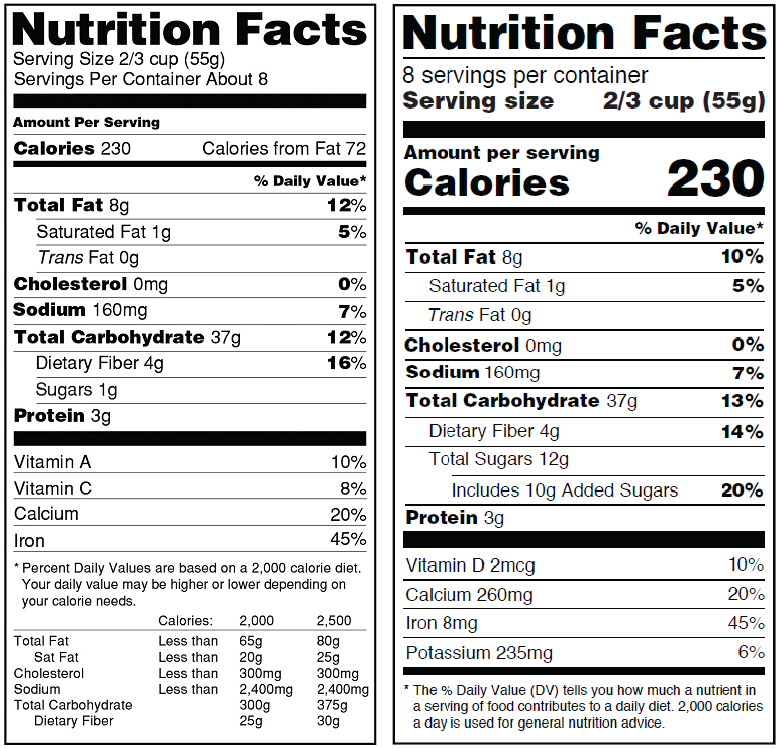Nutrition Facts labels have been around since 1992, but are receiving a refresh with compliance required by July 26, 2018. With two years lead time, meeting the requirements should be achievable by even the largest food manufacturers, but even for small food producers the biggest challenge isn’t reprinting but getting all the information correct.
What’s Behind the Changes
It’s not unusual to make updates over time to a system such as Nutrition Facts. Knowledge in the industry and consumer behavior are primary drivers of changing the way information is presented.
- Consumers tend to eat portions based on package size, rather than arbitrary measurements.
- Fat percentage is now understood to be less important than the type of fat, while added sugars are an important metric to differentiate from overall sugar content.
- Daily nutrient intake recommendations have changed, and some nutrients that consumers do not tend to consume enough of warrant highlighting.
What’s New on the Nutrition Facts Label
- Calories and serving sizes are larger and more visible.
- Serving sizes have been updated to reflect current consumer eating habits. According to the FDA, “By law, the Nutrition Labeling and Education Act, requires that serving sizes be based on what people actually eat.” Current labeling bases nutrition facts on set measurements (so containers may hold fractional serving quantities between 1 and 2—e.g., 1.5 servings in a container of soda), but the new facts will present the data for the entire container to help consumers make more informed choices.
- Added sugars are now noted, with recommended daily intake percentage.
- Dual-column labels will show “per serving” and “per package” metrics.
- Recommendations for nutrients such as sodium, fiber, and vitamin D have been updated to current guidelines.
- “Calories from fat” is removed, but individual fat type counts are retained.
- The percent daily value footnote is updated.
Does My Product Need a Nutrition Facts Label?
Many small food operations are exempt from nutrition facts labeling—but you don’t want to assume that applies to your food business without first doing your homework and then working with a printer familiar with the FDA requirements. If you’ve had a particularly good year and have bumped up your small enterprise to sales over $50,000—you need proper labeling. If you sell products marked “gluten free” or make other nutrient claims—you need proper labeling. The number of employees, the size of your product packaging, and the number of ingredients are all factors in whether or not you are required to comply with the FDA’s Nutrition Facts labeling.
Now is a great time to start sorting out whether you need the labels (and the advantages of using them even if you are not required), what information you need to gather to comply with the labels, and how soon you can deploy the updated version. Give us a call to get started!
Image Source: U.S. Food and Drug Administration

